Vinegar is a much-loved condiment for making salad dressings, as well as sauces and marinades. Grape vinegar is one of the easiest to make. Moreover, making your own homemade grape vinegar ensures more flavour and benefits than industrial vinegars. Follow us, we explain how to make your own vinegar from your grapes.
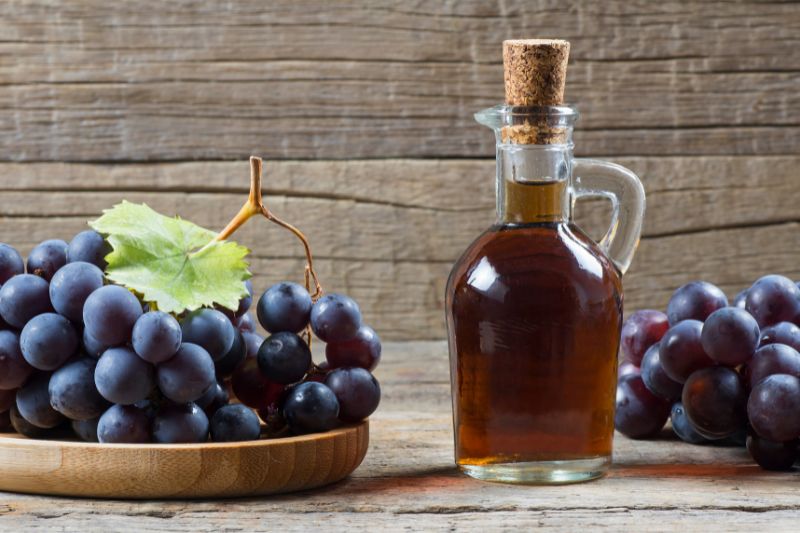
Wine vinegar or grape vinegar?
Do not confuse wine vinegar with grape vinegar. Indeed, wine vinegar is made from red or white wine, which already contains alcohol, whereas grape vinegar is made from fresh clusters of grapes.
Which grape variety to choose?
While it is true that grape vinegar can be made with all grape varieties, it is also true that its taste will depend on the variety chosen. A bit like wine actually. The riper a grape the faster its fermentation will be and the more flavourful the vinegar, with lots of aromas. Indeed, small acetic bacteria and yeasts need sugar to transform grape juice into vinegar. You should also use varieties without pips. Whether grown in your garden or bought at market or store, always choose organic grapes, free from treatment or pesticidal products.
Here is a small example of grapes to grow in the garden for making your own homemade grape vinegar:
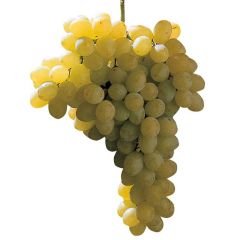
Vitis vinifera Sultanica bianca - Grape Vine
- Blütezeit June, July
- Höhe bei Reife 6 m

Vitis vinifera Aperina Nera - Seedless Grape vine
- Blütezeit June, July
- Höhe bei Reife 3,50 m

Vitis vinifera Ametista - Grape vine
- Blütezeit June, July
- Höhe bei Reife 3 m

Vitis vinifera Aperina bianca - Grape vine
- Blütezeit June, July
- Höhe bei Reife 5 m
How to make grape vinegar?
Ingredients :
- Ripe grapes
- A large bowl
- A large glass jar (preserving or jam jar) or a vinegar crock
- A piece of cloth or a filter
- A rubber band or a length of string
- 500 ml water
- 50 g sugar
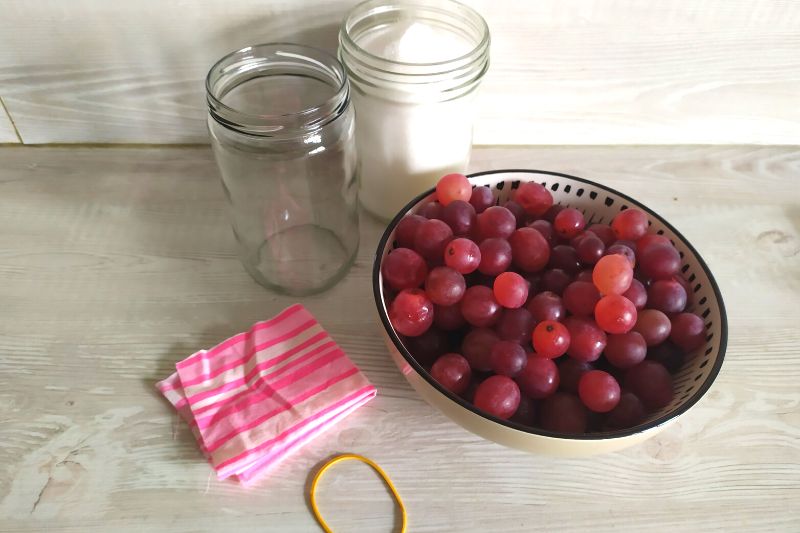
Grape vinegar recipe
1- Pick ripe, healthy clusters of grapes.
2- Rinse grapes under a gentle stream of water to remove dust, insects and residues.
3- Let clusters dry on a clean cloth, preferably in the sun.
4- Remove berries from the clusters and place them in a large bowl.
5- Then press the grapes to extract the juice, either by hand or with a potato masher.
6- Once each berry has burst, pour this pulp into a glass container or a vinegar crock. Make sure your container is very clean. Note: there is no need to filter the juice.
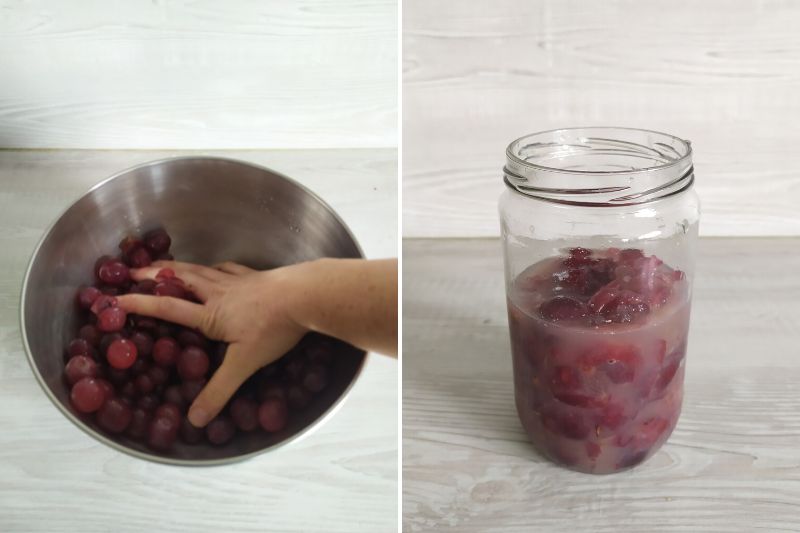
7- In another container, mix water and sugar. Then pour 2 cm of sugared water into the jar.
7- Do not close the jar. The grape juice needs to be in contact with air to turn into vinegar. To avoid unwanted deposits and fruit flies, replace the lid with a square of cloth or a filter. Hold it in place with a rubber band or string.

8- Place the container at room temperature (between 17 and 25 °C), in a well-ventilated room, for 40 days.
9- You will then notice a gelatinous layer. This is harmless; it is a layer of probiotics. Remove it, then strain the juice through a fine sieve, such as a chinois, or a coffee filter.
10- Smell the juice obtained. If it gives off a smell of wine or alcohol or if the juice foams, fermentation is not yet finished. It is important to let your juice ferment further. Put the grape juice back into a jar, again with a piece of cloth as lid, and repeat the operation two weeks later. A grape vinegar will no longer give off an odour of alcohol or wine, nor produce gas in the bottle.
11- Once the grape juice has turned into vinegar, store it in a glass jar or bottle, preferably with a cork stopper. You can then store at room temperature for up to 2 years.































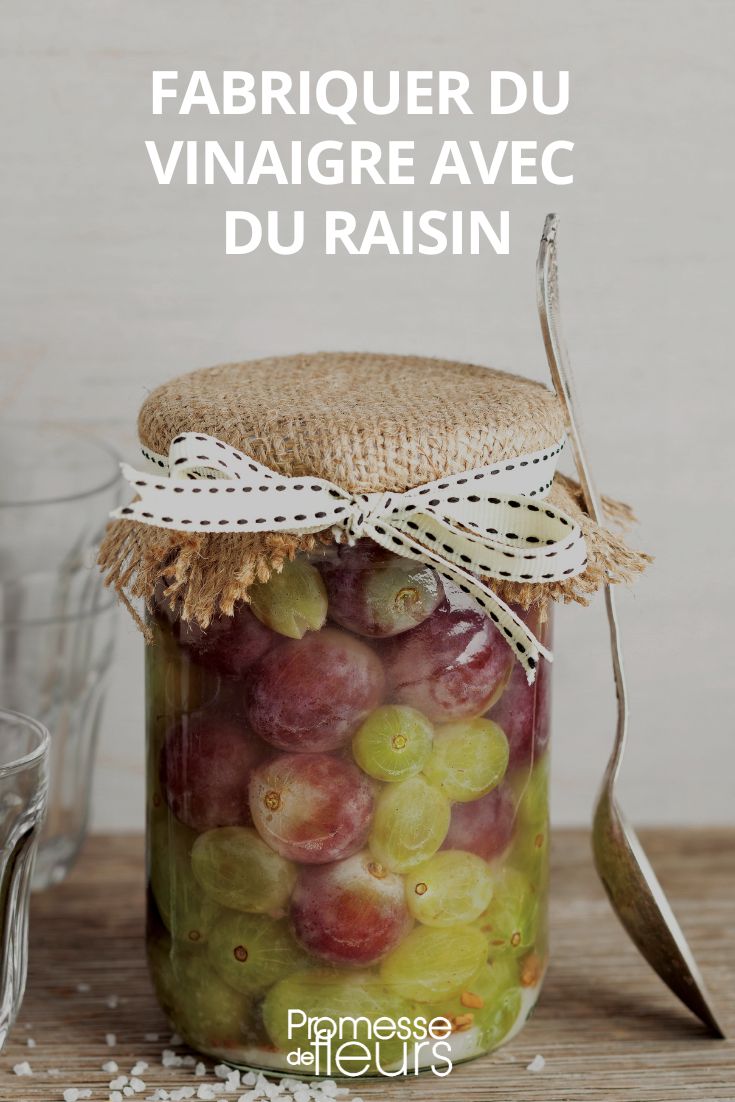
Comments